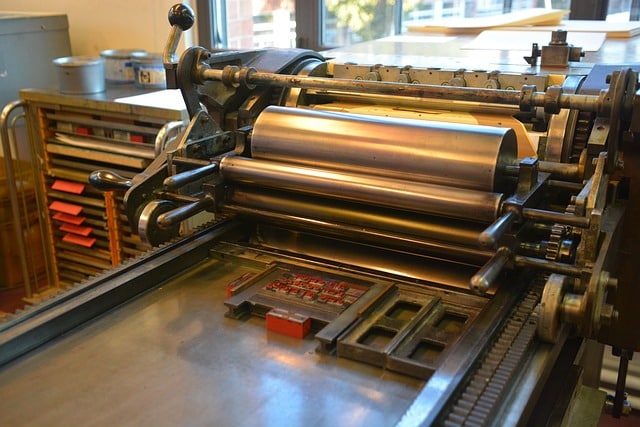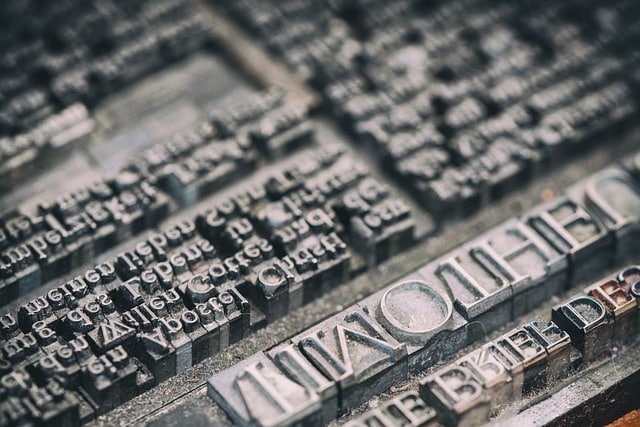
The printing press is the technique that makes possible the reproduction of figures and texts.
Printing is the industrial technique that allows you to reproduce , on paper or similar materials, texts and figures using type , plates or other procedures. The printing process consists of applying ink to the type and transferring it to the paper by pressure. By extension, the place or workshop where printing is done is known as a printing press.
For example: "The writer announced that the book is already in print, so it will go on sale in the coming weeks" , "I have to call the printer: the advertising has a couple of spelling errors" , "The government intends to control the printing press to curtail freedom of expression .
Origins of the printing press
The antecedents of the modern printing press are found in Ancient Rome ; Around 440 BC printing on clay objects began, while the first movable type printing press was created in China in the 1040s .
What is known as the modern printing press was created around 1440 by the German Johannes Gutenberg . Until then, books were reproduced in manuscript form by copyists , and this task took a long time and generated confusion since many of these people were illiterate, which is why they were forced to try to imitate the lines, as if they were mere drawings. .

A printing press can use type, plates and other resources.
Other mechanisms and technologies
Nowadays, the notion of printing transcends the printing press, since there are various mechanisms and technologies to reproduce texts , such as flexography , screen printing , lithography and digital methods .
Print on demand is that form of publication that consists of the reproduction of a certain number of copies at the time of receiving the order in question. This modality is especially used for the technique known as self-publishing , the path that many writers today choose due to the lack of money to finance a traditional publication.
The printing presses that offer this service do not usually dedicate themselves to the promotion of works, as a publisher does, at least not for free; Therefore, when a writer leans toward self-publishing, he or she must be in charge of contacting bookstores to get their books included in their catalogs, as well as organizing events such as public readings and obtaining a booth at the Book Fair. Every time you need a certain volume of copies, you just have to request it and it will be sent to you within the period established in the contract.
Hectograph and printing press
Not many know of the existence of this predecessor of modern copiers, which can be built following a very simple series of steps in any home. First of all, it should be clarified that this is a resource for those cases in which a large number of copies is not needed.
In principle, it is necessary to leave 30 grams of gelatin in cold water for about eight hours, making sure that it is completely covered. On the other hand, 60 grams of fine salt must be dissolved in half a liter of water, mix it with an average of 200 grams of pure glycerin and heat the mixture until it reaches 93°C. After an hour of cooking, add 20 drops of clove essence, useful so that the dough does not disintegrate, and pour everything onto a tray of suitable dimensions for the desired copies. All that remains is to let the hectograph rest for about five hours away from heat and dust.
Before first use, it is important to clean it with a damp sponge and let it dry almost completely. The steps to make a copy are very simple: it is simply necessary to capture the original on a sheet of alcohol , which can be purchased at any bookstore , and place the written side on the hectograph, making sure that no area is left without contact. with the gelatin. After a minute, it is removed and the blank sheets are placed one by one; The copy is instant, since the process is similar to that of a stamp. When the ink starts to run out, simply clean the base and repeat the procedure.
